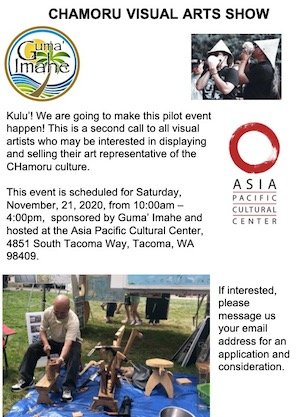Home
Merfalen Surname
- Details
- Written by: Bernard Punzalan
For quite some time I have been searching for the origins of the Merfalen surname. I think I may have found it while indexing names contained in the History of Micronesia volume series by Rodrigue Levesque. In an 1827 report[1] containing a list of foreigners living on Guam, there is a recording of Juan Medfalin, an Englishman listed with cattleman as his occupation, married, living on Guam for the past eight months and sponsored by Laureano Taitagui. This would place Juan’s arrival on Guam sometime around the latter part of 1826. While the names and information in the report is quite narrow, Levesque (editor) footnoted, “Many of those names are hard to decipher; some contain errors in spelling or in transcription. First names have been left as they appear, in Spanish.”

If in fact John Medfalin was also known as Juan Merfalen (current surname spelling), he would likely be the paternal source of origin for the Merfalen family on Guam. This notion would also suggest that he may have had at least one son (first name currently unknown) who was the husband of Maria Quisalao[2]. Maria, born about 1830, was listed as a widow in the 1897 census[3].
Bibliography:
[1] Levesque, Rodrigue. 2003. History of Micronesia: Volume 22, the Lutke Expedition and the First D’urville Expedition, 1827-1830, p209. Levesque Publications. Quebec, Canada
[2] Påle’ Forbes, Eric. 2012. Accessed 11 Nov 2020, https://paleric.blogspot.com/2012/04/lost-surnames.html
[3] Mallada, Victor F. 1897. Padron de Almas: Año de 1897 (Transcription), p99-71a. Copy obtained from the Library of Congress.
Pedro (Peter) Matanane: CHamoru World War I Army Infantry Veteran
- Details
- Written by: Bernard Punzalan
Pedro (Peter) Matanane: CHamoru World War I Army Infantry Veteran
Service No. 2278333
It’s pretty cool to work on a research project that ends up leading to a sidebar manifesting towards the development of working on another research topic of interest. While working on the CHamoru Mess Attendants/Stewards Project, I became fixated with members of the Matanane family. I am drawn to their family because I am related to the ones that also have Anderson roots, specifically manggåfan/familian CHe’. This journey has led me to discover more about the life of Pedro Matanane, who is the first CHamoru World War I Army veteran I have come across with the CHamoru Roots Genealogy Project.
Pedro was born on Guam, April 14 1895. He is the son of Josefa Matanane[1] and Joaquin Matanane Martinez[2]. From the 1920 church census Pedro was recorded as living in San Francisco, California. I am also able to ascertain that he had a brother named Jose (Peping), who married Maria Pereda Anderson (manggåfan CHe’, my grandmother’s sister). His Uncle, Juan Matanane (brother of Josefa), although listed with his family, was also noted as residing in San Francisco, California. All the families in the census figure below appear to be adjoining neighbors and reinforce that they were very close in their day-to-day relationships.

[1] Josefa Matanane and her son Pedro are listed on page 95 of the 1920 church census of Guam. Because this was a church census led by a Spanish priest, the names were recorded using Spanish conventions and notes. Therefore, females were recorded with their first names and maiden surnames, and males were recorded with their first name followed by their paternal surname and then maternal surname.
[2] Pedro’s marriage certificate identifies his father as Joaquin Martinez Matanane and his mother, whose surname was listed as a question mark but with the first name as “Josephine.”
Read more: Pedro (Peter) Matanane: CHamoru World War I Army Infantry Veteran
CHamoru Mess Attendants/Stewards Project
- Details
- Written by: Bernard Punzalan
In collaboration with Art Meilicke, author of the “United States Naval Career of Jesus Arriola Leon Guerrero: 1 December 1937 - 2 December 1957,” we are looking for some young and energetic people to collaborate and help research, collect, write, and record stories of CHamoru people that joined the U.S. Navy as Mess Attendants/Stewards prior to World War II.
If you are currently in high school or college, this is great opportunity to write a paper on this particular topic, not only to fulfill education requirements, but to help document and publish these stories. Art Meilicke has amassed several sources of information and documents regarding CHamoru men who enlisted in the U.S. Navy prior to World War II.
If you are family members or descendants of these men, we would certainly appreciate your help with documents, photos and any recordings you can share to help fuel this effort of interest towards documenting and telling the stories of these unique group of people.
We are also looking for people to get this word out and if willing to help with this project in some way shape or form.
Please share this special call of effort! Family and friends involved in the academic, we seek your support as well. Every bit of information is valued.
All the collaboration and volunteer effort is being featured on FaceBook link below. Please join us in helping to tell their stories for generations to come.
https://www.facebook.com/groups/725585081180031/?source_id=103556421315315
Read more on what Art Meilicke has compiled to date...
Page 21 of 81

